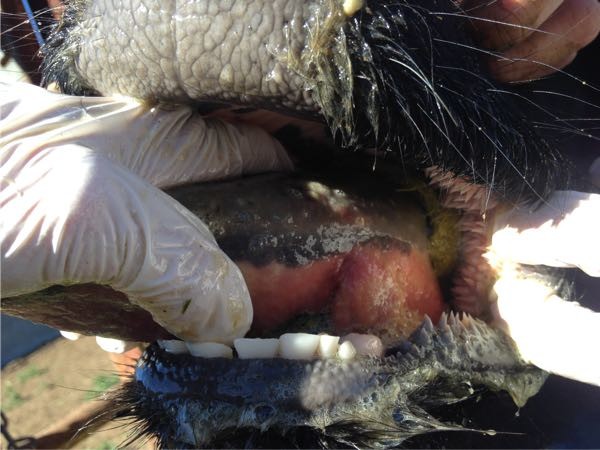

Wooden tongue, sometimes referred to as “woody tongue” is an infection caused by bacteria; Actinobacillus lignieresii. This disease can be expressed as either abscesses or wooden tongue or both. The bacteria that cause wooden tongue can be found in the mouth of normal healthy animals. When the mucosa of the mouth is injured by plant awns, foxtails, rough or coarse feed, etc., these bacteria are able to enter the body and begin causing problems.
The disease protrays a number of Symptoms such as;Inability to eat or drink,Drooling/ saliva, Rapid loss of condition, Painful and swollen tongue And Ulcers on tongue
Animals may occasionally die from starvation and thirst in the acute stages of the disease. As the infection becomes chronic, fibrous tissue is deposited and the tongue becomes shrunken and immobile and eating is difficult.
Local lymph nodes may be enlarged and abscesses may form and discharge creamy pus, which may contain granules.
Less commonly the jaw, lungs, Oesophageal groove, or udder may be affected. Rarely Granulomas may occur anywhere on the skin or internal organs.
It is important to begin treatment early, as advanced cases may fail to respond. The most common treatments are iodine therapy or Tetracyclines. Advanced cases may require surgical drainage and irrigation with iodine solution for several days. Treated animals should be observed regularly, as relapses can occur.
There are no vaccines available to treat this disease. Control is best achieved by early recognition and prompt treatment or cases, isolation or disposal of infected animals is recommended.
 Contact Jaguza Support
Contact Jaguza Support